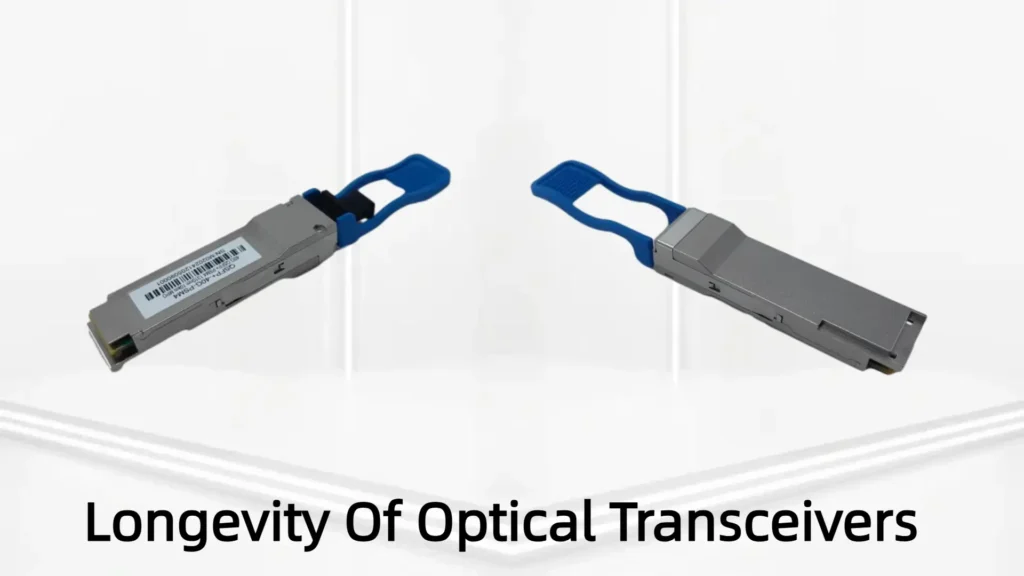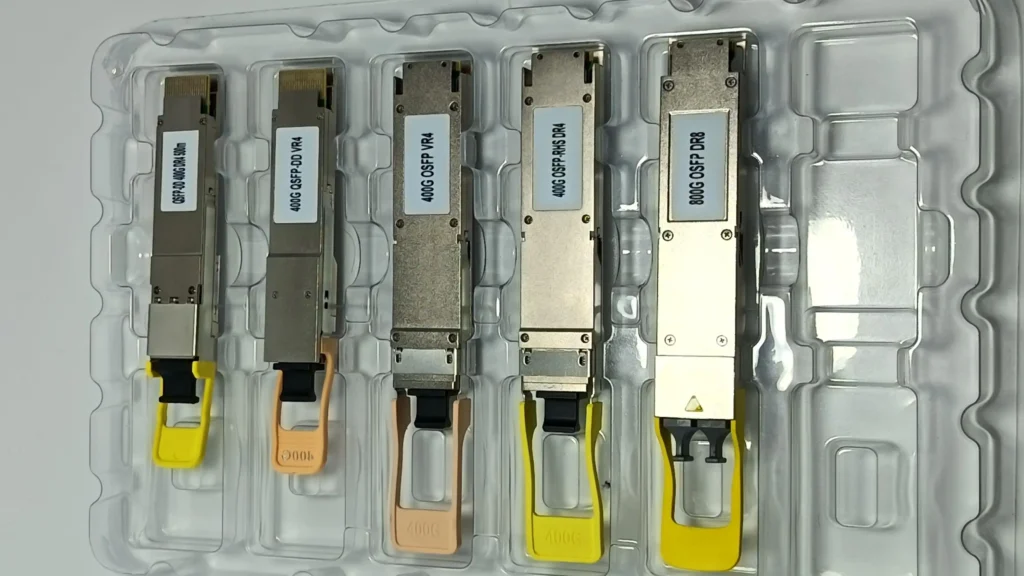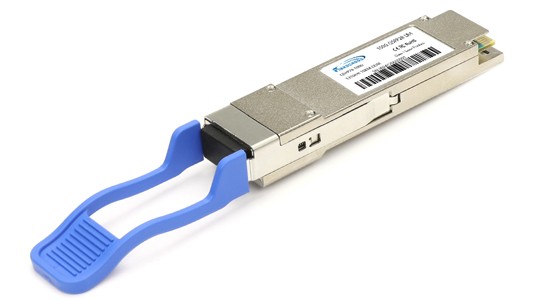What Is the Lifespan of an Optical Transceiver?
Optical transceivers, sometimes called optical modules, are the small, pluggable devices that enable high-speed communication over fiber networks. They convert electrical signals into light (and back again) and are critical to keeping modern networks running.
But like any piece of hardware, optical transceiver modules don’t last forever. Their lifespan depends on a mix of design, environment, and how they’re used in real-world conditions.

Typical Lifespan in Real Use
In well-cooled data centers, common modules such as SFP+ or QSFP28 often run reliably for 5–7 years. In harsher environments—like hot telecom rooms or outdoor enclosures—network operators often plan to replace them after 3–5 years.
Industrial-grade modules, rated for extreme temperatures (–40°C to +85°C), can last longer, sometimes exceeding 10 years. Still, the practical approach is to think in years, not decades, since real-world conditions are rarely perfect.
Types of Optical Transceivers
The main categories of optical transceiver modules all follow similar aging patterns:
SFP+ (10G) – Common in enterprise and metro networks.
QSFP+ (40G) – Older but still widely used in aggregation layers.
QSFP28 (100G) – Standard in data centers today.
QSFP-DD and OSFP (200G/400G) – High-density modules that run hotter, requiring better cooling.
Form factor alone doesn’t dictate lifespan; instead, heat, cleanliness, and handling have the biggest impact.
What Affects Their Lifespan?
Several factors influence how long an optical transceiver lasts:
1. Temperature and Cooling
Heat is the biggest enemy. Modules that operate near their temperature limits degrade faster. Good airflow and rack cooling are critical.
2. Optical Link Quality
Dirty connectors or fiber damage reduce signal strength. This forces the laser to work harder, which accelerates aging.
3. Connector Contamination
A speck of dust can cause signal loss. Always use dust caps and clean connectors before plugging them in.
4. Insertion and Removal Cycles
Each hot-swap slightly wears the connector. Frequent plugging/unplugging shortens lifespan.
5. Usage Hours
These modules often run 24/7. Even though datasheets list massive MTBF values, real-world aging is tied more to environmental stress than clock hours.
Signs of Aging or Failure
Optical transceivers rarely fail suddenly. Instead, they give warning signs:
Higher Error Rates – More CRC or FEC-corrected errors on a link.
Diagnostic Warnings – DOM/DDM readings showing falling receive power or rising laser bias.
Link Flapping – Intermittent connectivity issues.
Physical Wear – Scratched connectors or cracked casings.
Spotting these early helps avoid unexpected downtime.
How to Extend the Life of Optical Modules
With some care, you can get the most out of your transceivers:
Keep connectors clean and capped when not in use.
Avoid unnecessary insertion/removal.
Ensure racks are well-ventilated and fans run at proper speeds.
Respect fiber bend radius and cable strain limits.
Use industrial-grade optics in extreme environments.
Monitor DOM data regularly for early warning trends.
Buy from reputable sources—quality matters. Even brands like Fibrecross design modules to last, but they still benefit from careful handling.
Final Thoughts
In practice, most optical transceiver modules provide 3–7 years of reliable service, depending on conditions. With proper cooling, clean connections, and gentle handling, SFP+, QSFP+, QSFP28, QSFP-DD, and OSFP modules can deliver their full expected lifetime.
Proactive replacement—before they fail—keeps networks stable and avoids surprise outages. Treat them well, and they’ll quietly power your network for years.

FAQ About Longevity Of Transceivers
An optical module transceiver is a small device that converts electrical signals into optical signals for transmission over fiber and then back into electrical signals at the receiving end. It is widely used in switches, routers, and servers to enable high-speed communication in data centers and enterprise networks.
When selecting optical transceiver manufacturers, consider factors like product quality, compliance with MSA standards, warranty terms, and compatibility with your networking equipment. Reputable manufacturers typically provide lifecycle data, technical support, and full test reports to ensure reliability.
The price of an optical transceiver depends on its speed (10G, 40G, 100G, or 400G), transmission distance, wavelength, and form factor (SFP+, QSFP28, OSFP, etc.). Other influences include whether the module is commercial or industrial grade, as well as the brand and production scale of the supplier.
Optical transceiver testing ensures that modules meet performance standards and work correctly with your equipment. Common tests include checking transmit/receive power, eye diagrams, BER (bit error rate), and temperature stability. Proper testing reduces the risk of link errors and unexpected failures in live networks.




